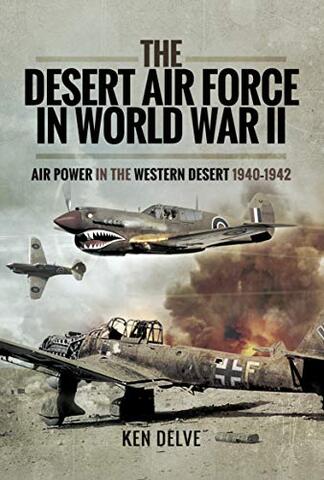The Desert Air Force In World War II

The Desert Air Force in World War II is an informative and enjoyable read. Though I most often enjoy operational histories, I also believe it is important to get a better idea as to what it was like to experience combat during the Second World War. To that end, Ken Delve does a superlative job of gathering and presenting as a coherent narrative the first-hand accounts from the aircrews responsible for fighting against the Axis powers during the first two years of the war in the Mediterranean, Africa, and the Middle East.
This book also offers a detailed look at the organizational structure, operations, and aircraft of what was the 1st Tactical Air Force - most popularly known today as The Desert Air Force. Though one thinks first of the Royal Air Force (RAF) in this regard please note that Austalian (RAAF), South African (SAAF), and U.S. pilots (by the summer of 1942) played important roles as well in either staffing or fighting with the Desert Air Force. Note also that Poles, Canadians, and other nationalities were instrumental in the Desert Air Force's ultimate success.
As stated in the sub-heading, the focus here is on events that took place from the summer of 1940 through the end of the summer of 1942. Though the focus is on events in North Africa, there are important sections detailing operations in East Africa, Iraq, the Balkans, Malta, and even the routes taken to ferry Allied aircraft into North Africa. There is quite a bit of ground covered, but done so in a succinct fashion. The well chosen first person accounts and various after-action reports edited for the reader richly illuminate the battles in the skies that took place across this vast region as well as the near equally difficult effort to supply and maintain a large collection of combat aircraft in such a desolate part of the world.
The book is divided into five primary sections that feature a general overview, select operations, the formation of the Desert Air Force, aircrew training and commentary on the strengths and weaknesses of Allied aircraft. Also included here are several annexes containing additional information about the Desert Air Force, its personnel, vital infrastructure, and more. The one weakness of the book is that the Desert Air Force's Italian and German opponents are not truly fleshed out. This hurts the larger narrative. The Allies were facing superb aircraft and pilots in their own right. A more detailed look at the structure, organization, and combat capabilities of the Axis forces gathered in the region would have done more to put the accomplishments of the Allies in perspective. Nevertheless, that weakness is outweighed by the book's greatest strength in its ability to put the reader in the pilot seat and really grasp the dangers and difficulties these brave men faced. It is for that reason that I recommend The Desert Air Force in World War II.



Post new comment